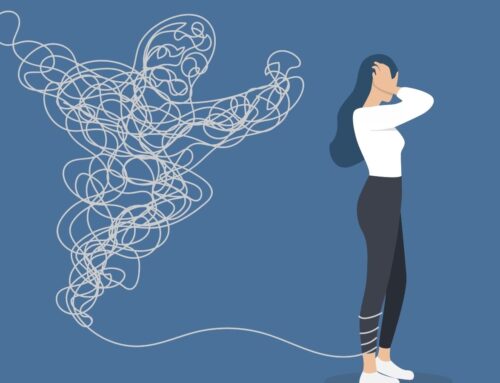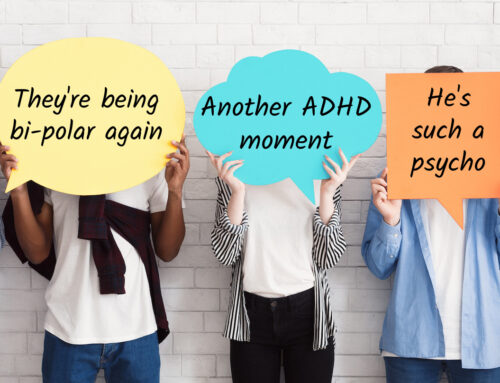If you are in a relationship, you and your partner will face problems together, big and small. Don’t fret, though, it’s just part of the deal. There may come a point, however, when you, your partner, may feel that it’s time to start therapy to overcome challenges or conflict, work through issues and disagreements, or even to just better understand each other and strengthen the relationship moving forward. It’s a step that shows that you and your partner care about the relationship. The question then becomes: Should you do individual therapy or couples therapy?
Couples therapy allows both members of the relationship to sit down with a therapist and receive counseling together. Individual therapy allows one or both members of the relationship to meet with a therapist on their own, but perhaps can explore issues and work through relationship issues. Both allow for growth and the opportunity to become a better partner.
Different people require or prefer different formats of therapy. But which one is right for you? Here we break down the potential benefits and drawbacks of doing couples therapy together, or individually. Remember, your decision should be tailored to your own needs and
preferences — not everyone will have the same response.
Couples therapy
Couples therapy allows a therapist to simultaneously treat both partners, creating space for a real-time active discussion and conflict resolution. It is a time to be truly present together and self-reflect — and come out better understanding each other.
Unlike individual therapy, this type of therapy allows for interaction between partners. If one partner is confused about why the other acts or thinks a certain way, they could immediately ask follow-up questions or for elaboration. A partner can speak their mind and address problems from their point of view, and the other can respond with their own viewpoint.
When it comes to conflict resolution, couples therapy, in some ways, allows the therapist to see the big picture, synthesizing the perspectives of both partners into one coherent whole. This can be especially useful when there are misunderstandings within the relationship. With directed questions, the therapist can support both partners in considering different perspectives— for example, they may inquire about intention or motivation behind particular behaviors or statements. Depending on the framework, the therapist may even delve into the individuals’ past to help illuminate various factors that may impact how each partner responds or behaves during certain moments. With the guidance of the therapist, couples can begin to can clarify each other’s personal understandings and beliefs together.
Though, your focus for couples therapy can be shaped and agreed upon as a group and altered, as needed, couples therapy can also be very forward-looking and solutions oriented. With both individuals’ needs and perspectives in mind, the therapist can come up with solutions and suggestions to barriers, problems, misunderstandings within the relationship. These can include conflict resolution skills, support around deepening vulnerability, or even exercises that help identify your communication patterns. Immediately, those tools can be brought home and applied together.
One drawback to couples therapy is that it may not feel as tailored or intensive to each individual. Naturally, the therapist is tasked with considering two different people — with different perspectives, needs, habits, reactions, worldviews – which allows for the space to feel balanced between both parties. Though this can be a positive thing for some couples, others may feel that they are not able to cover all the ground they’d want to. Additionally, couples may find that their relational concerns (i.e., communication, boundaries, attachment) may be connected to unresolved individual issues (i.e., trauma, mental health diagnoses) thus, require a more intense exploration which can only be done in individual treatment.
In some cases, individuals may feel hesitancy about sharing in front of their partner and the therapist, or there may be an imbalance in what each partner wants to talk about or share. However, this can be improved with discussions on boundaries and guidelines before and during the therapy sessions.
Couples therapy also depends on the willingness and availability — literally and otherwise — of both members of the relationship to make time for therapy. Sometimes, one person will be ready when the other may not.
Individual therapy
Individual therapy allows you to meet with a therapist one-on-one, whether you are in a relationship or not. For those in a relationship facing issues, during these sessions, you can talk about your own thoughts and problems, including those faced with your partner. By working with a therapist, you will gain clarity about yourself, and in turn, your relationship.
With individual therapy, you get the full attention of the therapist. You’ll really be able to focus in on your own challenges and have full autonomy around the topics you want to discuss. Naturally, you may find yourself discussing your own thoughts, actions, reactions or confusions within your relationship, for example if you are changing yourself too much for your partner or if you are experiencing issues with trust or opening up.
You will also have complete privacy in case you are speaking about your own personal issues, or your thoughts about the relationship. This can help decrease pressure and increase openness, which can be particularly useful to those completely new to therapy or those dealing with personal mental health issues. You may also find that individual therapy helps you understand yourself, your patterns, and underlying factors that inform your relationships on the daily basis.
One drawback is that for couples, conflict resolution in individual therapy can result in the therapist and the client gaining understanding and forging solutions with mostly one side of the relationship. It can be difficult to fully grasp the dynamics at hand within the couple. Individual therapy can lead to couples blaming themselves or their partner, who is unable to say their part during the session. Clarity and understanding can be gained even when one member of the relationship unpacks their thoughts, motives and decisions with a therapist. But, if the other partner is not in the room, some blanks may be left for the therapist and client to hypothesize.
Still, individual therapy is a solution, of course, if one partner is unable, or not yet ready, to begin therapy. If that is the case, the person enrolled in therapy may still grow as a partner and can even take home tools that can help the couple as a whole better communicate and be together. It may even be helpful to even bring in your partner for one session to allow the therapist to meet and understand them in person.
A mix of both
It’s also possible to do a mix of both formats of therapy — with some sessions done individually and some done as a couple. This allows couples to discuss what they’d like to as a group, with full context, as well as what they’d like to work through on their own, privately. This can be done with the same therapist, or different ones.
Combining both structures can help solve for some of the drawbacks of just doing one type. But, doing so also opens up some potential drawbacks of its own.
It may be difficult to balance confidentiality and openness when seeing the same therapist individually and as a couple. If you choose to do combined couples therapy with the same therapist, you and the therapist should create clear boundaries between the individual sessions and the couple sessions to ensure that confidentiality is maintained.
Also, remember that if you are not feeling fulfilled with your chosen format of therapy, or if you simply want to try out another method, you can always change it up. No matter what, you’ll be learning and understanding more about yourself, and in doing so, more about your relationship — all with the ultimate goal of being a better partner in a better partnership.






